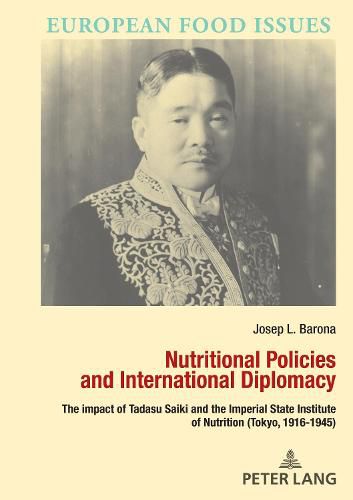Readings Newsletter
Become a Readings Member to make your shopping experience even easier.
Sign in or sign up for free!
You’re not far away from qualifying for FREE standard shipping within Australia
You’ve qualified for FREE standard shipping within Australia
The cart is loading…






This title is printed to order. This book may have been self-published. If so, we cannot guarantee the quality of the content. In the main most books will have gone through the editing process however some may not. We therefore suggest that you be aware of this before ordering this book. If in doubt check either the author or publisher’s details as we are unable to accept any returns unless they are faulty. Please contact us if you have any questions.
This book offers a general approach to the importance of nutrition and public health policies in the process of modernisation of Japan during the interwar years. It describes the origins of scientific and technical modernisation during the Edo, Meiji, and Taisho periods, including the demographic and epidemiologic background, and the birth of a public health administration parallel to the strengthening and expansion of the Japanese empire. Special attention is given to the cultural significance of rice for the Japanese population, and its close relation to disease and nutritional deficiencies, especially beriberi.
The second part of the book is devoted to the prominent figure of Tadasu Saiki (1876-1959), founding father of Japanese nutritional science, and his initiative in creating the Imperial State Institute for Nutrition (ISIN) in Tokyo. The new institution boosted national policies and a wide international diplomacy generating great expectations in Japan and abroad. The international impact of Japanese nutritional research and dietary policies is also analysed. The book ends with an analysis of the negative consequences of the Second World War, a critical breakdown in health and nutrition among the Japanese population.
$9.00 standard shipping within Australia
FREE standard shipping within Australia for orders over $100.00
Express & International shipping calculated at checkout
This title is printed to order. This book may have been self-published. If so, we cannot guarantee the quality of the content. In the main most books will have gone through the editing process however some may not. We therefore suggest that you be aware of this before ordering this book. If in doubt check either the author or publisher’s details as we are unable to accept any returns unless they are faulty. Please contact us if you have any questions.
This book offers a general approach to the importance of nutrition and public health policies in the process of modernisation of Japan during the interwar years. It describes the origins of scientific and technical modernisation during the Edo, Meiji, and Taisho periods, including the demographic and epidemiologic background, and the birth of a public health administration parallel to the strengthening and expansion of the Japanese empire. Special attention is given to the cultural significance of rice for the Japanese population, and its close relation to disease and nutritional deficiencies, especially beriberi.
The second part of the book is devoted to the prominent figure of Tadasu Saiki (1876-1959), founding father of Japanese nutritional science, and his initiative in creating the Imperial State Institute for Nutrition (ISIN) in Tokyo. The new institution boosted national policies and a wide international diplomacy generating great expectations in Japan and abroad. The international impact of Japanese nutritional research and dietary policies is also analysed. The book ends with an analysis of the negative consequences of the Second World War, a critical breakdown in health and nutrition among the Japanese population.